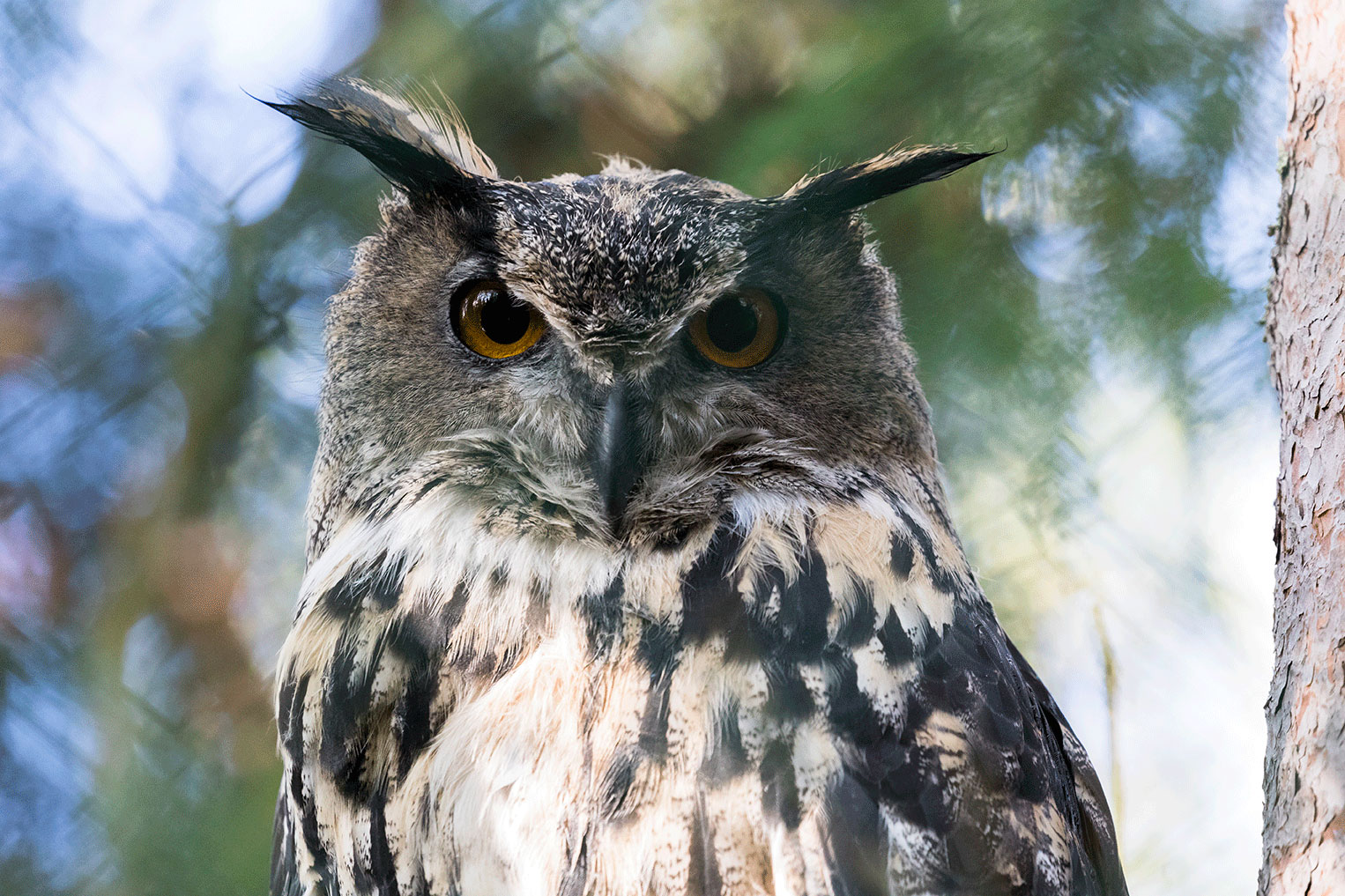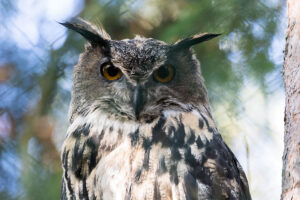
Eagle owl
LIVING HABITS
Wide conifer forests have traditionally been considered the most typical habitat for the eagle owl, but they are also found both in agricultural environments and archipelagos. Some eagle owls have even settled in cities. Eagle owls are not too fussy about their food. They eat both small and middle-size birds (fowls and crows) and mammals (rabbits, small rodents, rats). The eagle owl often nests on the ground on a ledge. Eagle owls usually hunt during dawn and dusk. Eagle owls can be found throughout Finland, except the northernmost parts of Lapland. Eagle owls are more common in the southern and western parts of Finland, getting ever rarer the further up North you go.
PROTECTION
The eagle owl is a protected species in Finland.
ADAPTING TO WINTER
The eagle owl is a non-migratory bird, and very active during the winter. The plumage of the eagle owl is thicker in the winter, isolating the bird well against the cold. In the autumn eagle owls store subcutaneous fat for reserve nutrition as well as for additional isolation against the cold.
Eagle owl
Bubo bubo
Class: Aves – Birds
Order: Strigiformes – Owls
Family: Strigidae – Owls
Size: 1600-4000g, wingspan: 160-190cm, females larger than males.
Breeding: Female eagle owl lays 2-3 eggs in March-April, incubation period 32-36 days and nights.
Lifespan: According to ringing data, the oldest eagle owl has lived to 27 years of age.


Did you know…
Did you know, that before, open dumps with their rats and crows hovering about provided year-round food for eagle owls? The refusal of the use of these dumps by law has been good for the environment, but a loss of an important area of nutrition for the eagle owls.




